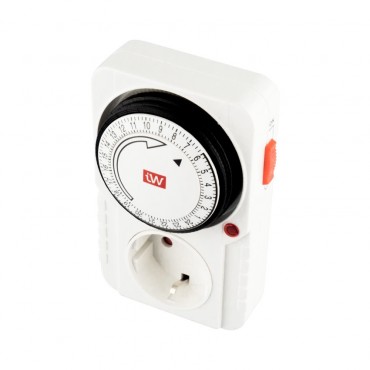A timer is a small device that automatically opens and closes an electrical circuit for a specific period of time. In short, we can say that it allows you to program the on/off switching of different devices in a simple and straightforward manner.
Main purposes of a timer
The range of applications are very diverse, here are some of the most practical and interesting ones.
Presence simulator
A good strategy to prevent home invasions is to never make your home appear uninhabited, this is particularly valuable when you go on holiday. This can be achieved by scheduling the lights or a radio for example, to be switched on and off.

Reduce the use of your electric water heater
One way to save on your electricity bill is to avoid keeping your electric water heater on all day long to keep the water hot. If the water heater takes a short time to heat the water, we can turn it on an hour before taking a shower, for example.
Another option, if you have a time discrimination contract, is for the water heater to be switched on only during off-peak hours, when electricity is cheapest.
Freshly cooked food
This trick is especially handy for people who like to cook using a crockpot. With the timer we can indicate when to start cooking and for how long. In addition, we can set a time to reheat the food if necessary.

Eliminate Standby consumption
To reduce “ghost” consumption of electronic devices, you should switch them off completely. We all have the television or the stereo on a power strip with a switch, but often, through forgetfulness or laziness, we do not switch it off. With a timer you can automatically switch off these devices during the hours when they are not in use.
Turning on garden lights
With this device, you can specify the times when you want your garden lighting to remain on.
How to program an analogue timer
Programming such a device is very simple and can be done in three steps:
- Set the current time of the timer.
- Use the rotary tab to set the switch-on period.
- Power on.

It should be noted that both the tabs indicating the ignition intervals and the hour marks indicate 15-minute periods.
On the other hand, a button on the side allows the device to behave like a normal socket.
Other types of timers
On this occasion we have looked at some interesting applications for our timers and we have focused on the operation of the analogue version, but there are other options.
Within our range of electrical programmers and timers you can find digital plug-in versions and other (digital and analogue) timers that are installed in the electrical distribution board itself, on a DIN rail.
As you can see, the options for using a timer are varied and we have shown you some of them here. What other uses can you think of or are you using your electrical timers for?


